Items filtered by date: June 2015
New Shoe Designed to Grow With Children
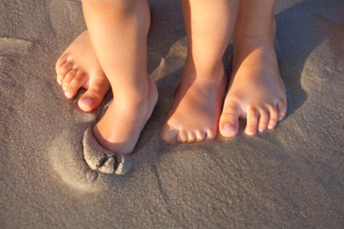 Children all around the world grow out of their shoes so quickly that many parents, especially, in third world countries, cannot afford to buy their children shoes.The Shoe That Grows, designed by Kenton Lee, was created to combat this problem by allowing the shoe to expand up to five sizes and by lasting up to five years. Lee was inspired when he went on a trip to Kenya and saw many children running around barefoot, making them especially susceptible to diseases and infections. The leather and rubber materials make the shoes especially durable and come in size small (for children grades kindergarten to fourth grade) and size large (grades fifth to ninth).
Children all around the world grow out of their shoes so quickly that many parents, especially, in third world countries, cannot afford to buy their children shoes.The Shoe That Grows, designed by Kenton Lee, was created to combat this problem by allowing the shoe to expand up to five sizes and by lasting up to five years. Lee was inspired when he went on a trip to Kenya and saw many children running around barefoot, making them especially susceptible to diseases and infections. The leather and rubber materials make the shoes especially durable and come in size small (for children grades kindergarten to fourth grade) and size large (grades fifth to ninth).
Making sure children have the proper fitting shoes is important to their foot health as they grow. If you have any questions contact Dr. Michael E. Newman of Pennsylvania. Our doctor will treat your child’s foot and ankle needs.
Keeping Children's Feet Healthy
Having healthy feet in childhood can help prevent medical problems later in life, namely in the back and legs. As children grow, their feet require different types of care from birth to school-age.
Although babies do not walk yet, it is still very important to take care of their feet.
- Avoid putting tight shoes or socks on his or her feet
- Allow the baby to stretch and kick his or her feet to feel comfortable
As a toddler, kids are now on the move and begin to develop differently. At this age toddlers are getting a feel for walking, so don’t be alarmed if your toddler is unsteady or ‘walks funny’. Be sure the child wears comfortable and protective shoes so that they can grow into their feet properly.
As your child gets older, it is important to teach them how to take care of their feet
- Show them proper hygiene to prevent infections such as fungus
- Be watchful of any pain or injury
- Have all injuries checked by a doctor as soon as possible
- Comfortable, protective shoes should always be worn, especially at play
Children of all ages are constantly developing and growing, and as a parent you want to make sure that nothing is hindering their maturation. This includes caring for their feet, as healthy feet are important in order to live a normal, fulfilling life.
If you have any questions please feel free to contact our offices located in Plymouth Meeting and Ambler, PA. We offer the newest diagnostic and treatment technologies for all your foot and ankle needs.
Study Finds Rebound Shoes Reduce Injury by Softening Impact on the Feet
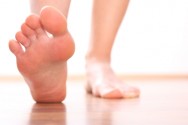 According to a study conducted at the University of Nevada and presented in the American Society of Biomechanics, when the foot hits in the ground while wearing rebound shoes, there is a 15% increase in force compared to a 96% increase when wearing standard running shoes. Rebound shoes, or boots with springs, are being used as a new trendy exercise with claims of reducing the intensity between the foot and the ground when jumping or running. Although more studies have found that the shoes reduce injuries, they have been known to cause an increase blisters on the feet.
According to a study conducted at the University of Nevada and presented in the American Society of Biomechanics, when the foot hits in the ground while wearing rebound shoes, there is a 15% increase in force compared to a 96% increase when wearing standard running shoes. Rebound shoes, or boots with springs, are being used as a new trendy exercise with claims of reducing the intensity between the foot and the ground when jumping or running. Although more studies have found that the shoes reduce injuries, they have been known to cause an increase blisters on the feet.
Exercise efficiency involves biomechanics, which incorporates the moving parts that manage the movement of your feet. To learn more about biomechanics, see Dr. Michael E. Newman from Pennsylvania. Our doctor can provide you with the foot and ankle information you seek.
A History of Biomechanics
- Biomechanics dates back to the BC era in Egypt where evidence of professional foot care has been recorded.
- In 1974 biomechanics gained a higher profile from the studies of Merton Root, who claimed that by changing or controlling the forces between the ankle and the foot, corrections or conditions could be implemented to gain strength and coordination to the area.
Modern technology improvements are based on past theories and therapeutic processes providing a better understanding of podiatry concepts for biomechanics. Computers provide accurate determinations about the forces, moments and patterns of the foot and lower legs with the most important information captured.
Advances in materials and more awareness of biomechanics have developed enhanced corrective methods, offering further options for foot-related injuries. Understanding foot biomechanics can help improve and eliminate pain, stopping further stress to the foot.
If you have any questions, please contact our offices located in Plymouth Meeting and Ambler, PA. We offer the newest diagnostic and treatment technologies for all your foot care needs.
Australians Seeking Botox Injects to Reduce Sweaty Feet
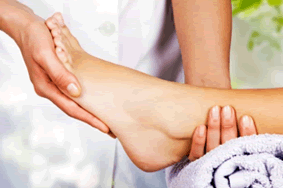 Australians have recently been found to reduce hyperhidrosis of the feet with the help of Botox injections. According to neurologist and clinical professor Dr. Peter Silbert of University of Western Australia, when Botox is injected near a sweat gland, it blocks communication between the gland and the nerves. This is said to prevent excessive sweating in the area, but the area must be injected every six months which comes with side effects such as weakness.
Australians have recently been found to reduce hyperhidrosis of the feet with the help of Botox injections. According to neurologist and clinical professor Dr. Peter Silbert of University of Western Australia, when Botox is injected near a sweat gland, it blocks communication between the gland and the nerves. This is said to prevent excessive sweating in the area, but the area must be injected every six months which comes with side effects such as weakness.
If you are suffering from hyperhidrosis contact Dr. Michael E. Newman from Pennsylvania. Our doctor will treat your foot and ankle needs.
Hyperhidrosis of the Feet
Hyperhidrosis is a rare disorder that can cause people to have excessive sweating of their feet. This can usually occur all on its own without rigorous activity involved. People who suffer from hyperhidrosis may also experience sweaty palms.
Although it is said that sweating is a healthy process meant to cool down the body temperature and to maintain a proper internal temperature, hyperhidrosis may prove to be a huge hindrance on a person’s everyday life.
Plantar hyperhidrosis is considered to be the main form of hyperhidrosis. Secondary hyperhidrosis can refer to sweating that occurs in areas other than the feet or hands and armpits. Often this may be a sign of it being related to another medical condition such as menopause, hyperthyroidism and even Parkinson’s disease.
In order to alleviate this condition, it is important to see your doctor so that they may prescribe the necessary medications so that you can begin to live a normal life again. If this is left untreated, it is said that it will persist throughout an individual’s life.
A last resort approach would be surgery, but it is best to speak with your doctor to find out what may be the best treatment for you.
If you have any questions, please feel free to contact our offices located in Plymouth Meeting and Ambler, PA. We offer the newest diagnostic and treatment technologies for all your foot and ankle needs.
How to Prevent Blisters From Running Shoes
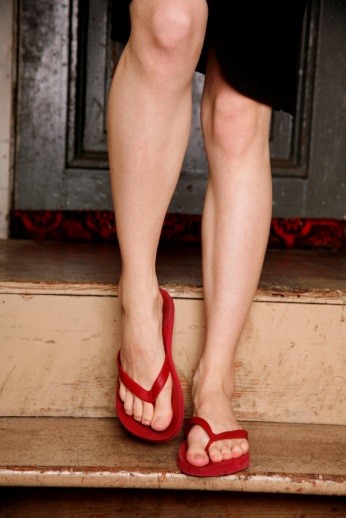 Runners, although faced with many potential foot and ankle issues, often face blisters on the feet due to the friction between the foot and shoe. Accordingly every shoe comes with an extra set of shoe lace holes that help prevent this friction on the foot by tightening the fit of the shoe. When lacing the shoe, each lace should be inserted into the extra hole creating a loop. The laces are then crossed into each loop on the other side of the shoe and then tied as normal. Runners can also try moisture free socks or put petroleum jelly on their feet before a run to reduce friction and prevent blisters.
Runners, although faced with many potential foot and ankle issues, often face blisters on the feet due to the friction between the foot and shoe. Accordingly every shoe comes with an extra set of shoe lace holes that help prevent this friction on the foot by tightening the fit of the shoe. When lacing the shoe, each lace should be inserted into the extra hole creating a loop. The laces are then crossed into each loop on the other side of the shoe and then tied as normal. Runners can also try moisture free socks or put petroleum jelly on their feet before a run to reduce friction and prevent blisters.
Blisters are prone to making everyday activities extremely uncomfortable. If you have any concerns with blisters on your feet contact Dr. Michael E. Newman and Dr. Denise Kohler of Pennsylvania. Our doctors will treat your foot and ankle needs.
Foot Blisters
Foot blisters develop as a result of constantly wearing tight or ill-fitting footwear. This happens due to the constant rubbing from the shoe, which can often lead to pain.
What are Foot Blisters?
A foot blister is a small fluid-filled pocket that forms on the upper-most layer of the skin. Blisters are filled with clear fluid and can lead to blood drainage or pus if the area becomes infected.
How do Blisters Form?
Blisters on the feet are often the result of constant friction of skin and material, usually by shoe rubbing. Walking in sandals, boots, or shoes that don’t fit properly for long periods of time can result in a blister. Having consistent foot moisture and humidity can easily lead to blister formation.
Prevention & Treatment
It is important to properly care for the affected area in order to prevent infection and ease the pain. Do not lance the blister and use a Band-Aid to provide pain relief. Also, be sure to keep your feet dry and wear proper fitting shoes. If you see blood or pus in a blister, seek assistance from a doctor.
If you have any questions please feel free to contact our offices located in Plymouth Meeting and Ambler, PA. We offer the newest diagnostic tools and technology to treat your foot and ankle needs.
Quality Shoe Materials can help prevent Foot Problems
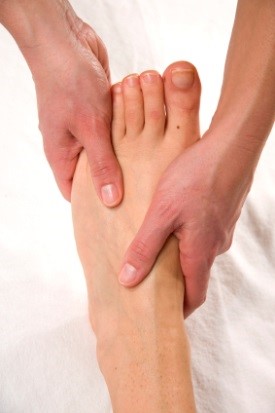 Leo Faramelli of Leo’s Shoe Repair has a lot of experience selling and repairing shoes and has a vast understanding of how certain shoes can cause problems for the feet. “Older shoes are made a lot better. There’s much more real leather. Today, most of the shoe is vinyl to an extent,” Leo states. Today shoes are made with a cheaper grade of leather than is then coated with vinyl and plastic. The shoes look great but that are not as quality, putting customers feet at risk for problems such as corns. Shoes made out of real leather will mold to your feet.
Leo Faramelli of Leo’s Shoe Repair has a lot of experience selling and repairing shoes and has a vast understanding of how certain shoes can cause problems for the feet. “Older shoes are made a lot better. There’s much more real leather. Today, most of the shoe is vinyl to an extent,” Leo states. Today shoes are made with a cheaper grade of leather than is then coated with vinyl and plastic. The shoes look great but that are not as quality, putting customers feet at risk for problems such as corns. Shoes made out of real leather will mold to your feet.
Shoes that are not properly suited for the feet can cause corns and other podiatric problems. If you have any foot or ankle concerns, contact Dr. Michael E. Newman of Pennsylvania. Our doctor will attend to your foot and ankle needs.
Corns: What are they? And how do you get rid of them?
Corns can be described as areas of the skin that have thickened to the point of becoming painful or irritating. They are often layers and layers of the skin that have become dry and rough, and are normally smaller than calluses.
Ways to Prevent Corns
There are many ways to get rid of painful corns such as wearing:
- Well-fitting socks
- Comfortable shoes that are not tight around your foot
- Shoes that offer support
Treating Corns
Treating corns involves removing the dead skin that has built up in the specific area of the foot. Salicylic acid can help in getting rid of these corns because it dissolves keratin, which is the protein that makes up a good majority of corns. Podiatrists recommend that people with diabetes not use salicylic acid but should consult with their podiatrist regarding the treatment of corns.
If you have any questions feel free to contact our offices located in Plymouth Meeting and Ambler, PA. We offer the newest diagnostic tools and technologies to treat your foot and ankle needs.
